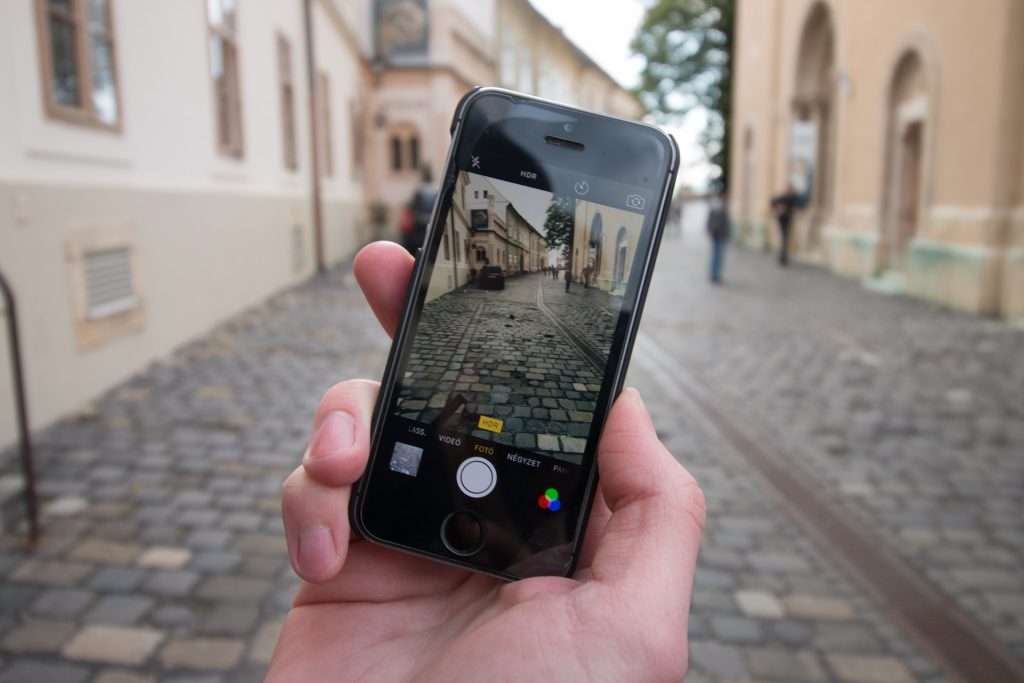Use Case: Location aware learning
Location, location, education
Location aware learning provides universities and colleges with a range of student learning opportunities which take advantage of their current physical location. Consequently, the potential for location aware learning to take place on the intelligent campus is being explored in a range of ways.
Starting with QR codes
Many mobile devices are already location aware but, even without this facility, location based learning is taking place on campuses through the use of the camera on mobile devices along with QR codes. Students can explore learning resources and opportunities across a campus relating to their field of studies, for example, architectural building features, museums objects, gallery artefacts, laboratories or gardens. QR codes are Quick Response Codes in the form of a matrix barcode providing a unique identifier that can be attached to a learning object. The Appalachian State University provides an example having created a learning resource in the Daniel Boone Native Garden using QR codes to identify native plants. (http://bit.ly/2z15d4e)
Moving on to GPS
The technology available in most mobile devices, such as smartphones, can provide much more than QR scanning. They incorporate a range of location aware technologies. Most devices can use a number of these technologies to identify their location. These include:
- Global Positioning System (GPS) – using satellite signals this technology is accurate to approximately 10 metres and is particularly effective outdoors
- Mobile phone transmitter towers – generally good in cities
- Wi-fi – coverage maybe limited but a high degree of accuracy
- Device’s internal sensors, such as inertia, compass, accelerometer and gyroscope – no external input is required but this is only usable for a short time being very useful in locations such as tunnels
- Bluetooth beacons – the beacons need to be close together but they can provide very accurate location data
This all means that the technology is available for the intelligent campus to constantly locate an individual and for the individual to know their whereabouts. This could be useful for security and safety purposes providing reassurance to vulnerable or less able individuals, particularly at night.
Location awareness is a useful facility for a newcomer or visitor to the campus who requires a self-guided tour or directions to a building or room. Student attendance, for example, at lectures, could also be monitored using this location awareness.
Location learning
However, more ambitiously, location awareness could be taken advantage of in module teaching or when informal learning opportunities occur. Systems such as the Adobe Captivate 8, content development suite, utilise the GPS features in mobile devices to create location aware mobile learning modules, for example the Australia Zoo App (https://adobe.ly/2xHe5be). As mentioned previously a wide range of opportunities exist on most campuses to take learning out of the classroom or lecture theatre using all of the campus resources, assets and facilities.
Beyond the campus
As the intelligent campus becomes more integrated with the smart city these learning opportunities will be taken beyond the campus to include the cities museums, galleries, businesses, transport system, utility infrastructure, government and public buildings. Indeed the whole city, in effect, becomes part of the campus. The University of Tampere in Finland is working with the city of Tampere to improve services through location awareness. This pilot includes the use of wi-fi and Bluetooth location techniques to provide indoor location coverage (https://citytrack.fi).
Augmented Reality check
A significant enhancement, both on the campus and across the city, to location based learning could be achieved through the development of augmented reality (AR).
The use of mobile and wearable technology will increase the functionality and popularity of AR combined with location awareness. Apps such as Lookaround (http://bit.ly/2iQY2Fp), developed at the International Institute of Information Technology, Bangalore, allows the provision of location based information on a mobile device using an AR interface. The Wikitude app is being use to explore and understand the Terracotta Warriors exhibition at the Franklin Institute ( http://bit.ly/2zUzMWc ).
The location aware learning environment
At Athabasca University , Canada, Dr Qing Tan is investigating the “Mobile Virtual Campus (MVC)“ which could provide an interactive platform for online mobile learners using the location awareness and other built-in sensory components in mobile devices. Students will be able learn collaboratively and interactively either face-to-face, across the campus or elsewhere in the MVC at any time. Augmented Reality techniques and the location of learning objects, will allow learners to see the suitable learning contents superimposed upon these specific learning objects including interactive elements. (http://bit.ly/2lB5Snp )
And so…
If the technology hurdles are overcome, it is clear that location aware learning shares many of the ethical issues that are of concern with respect to other intelligent campus developments. Privacy, intrusiveness and security questions will need to be resolved if location aware learning is to take off.
Also, the range of people and departments from across the institution that will need to be involved which will add further difficulty to the management and administrative requirements.
However, location aware learning may well be considered an enhancement to the student experience for the Pokemon Go generation.




